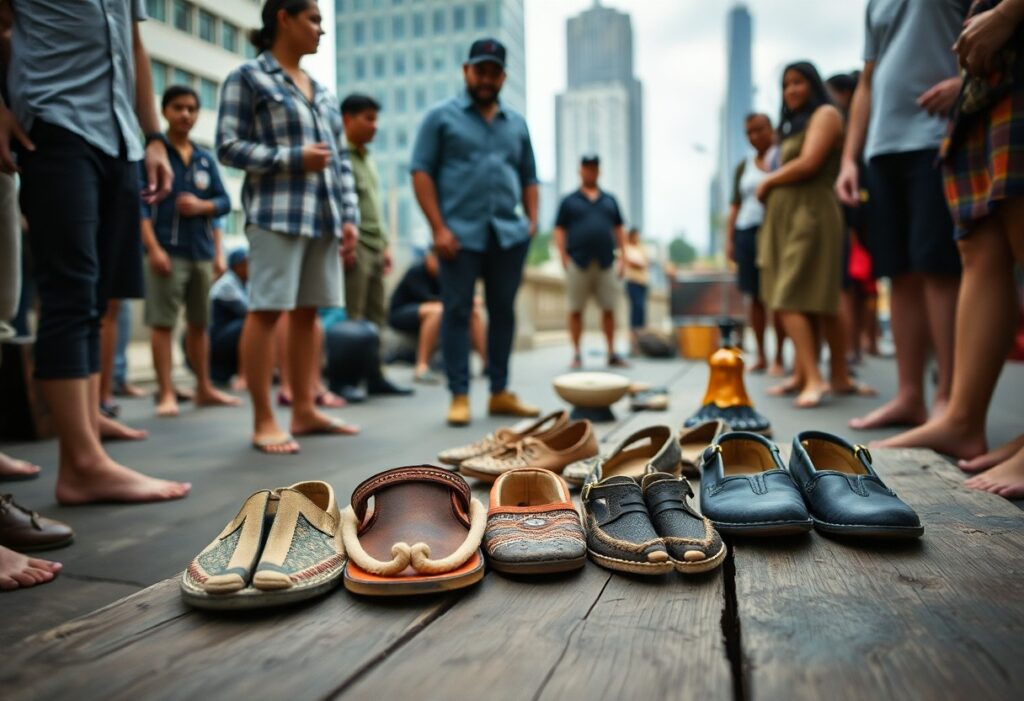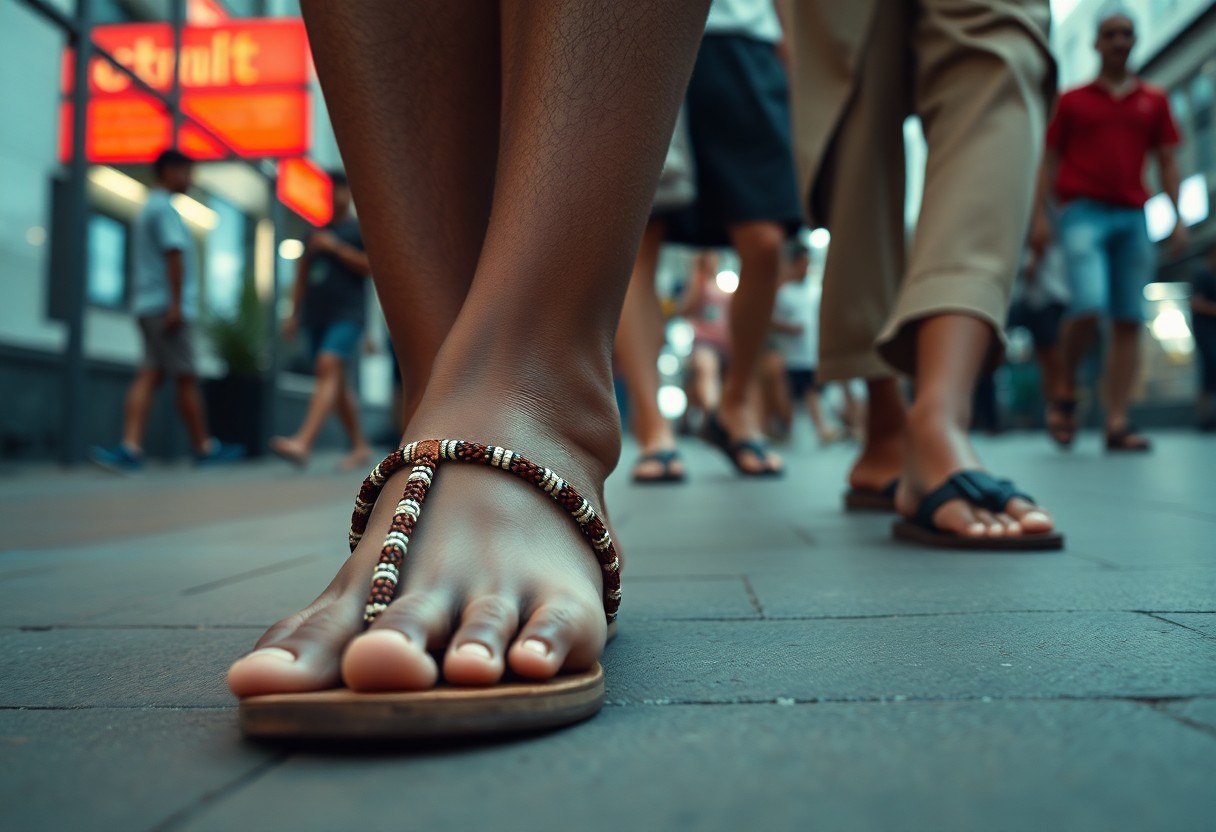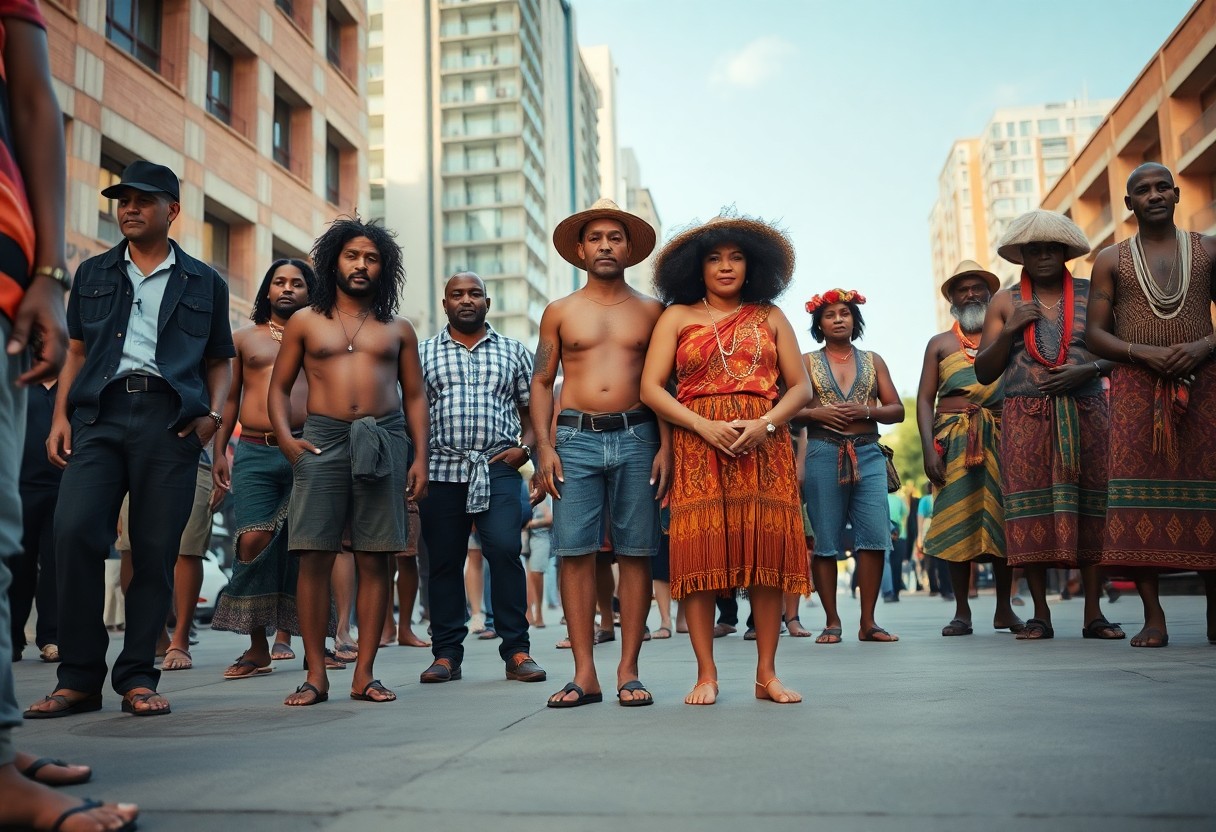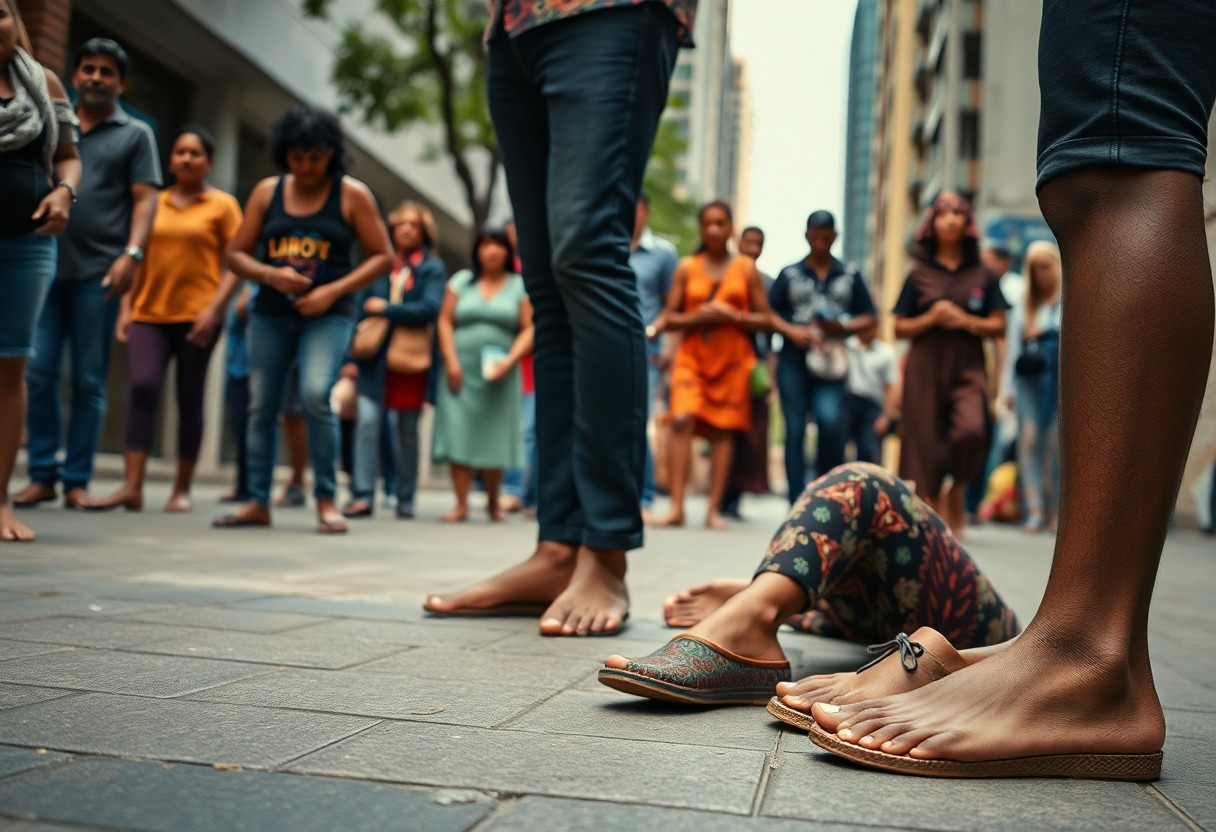
Exploring the captivating world of barefoot footwear through the lens of cultural anthropology unveils intriguing narratives that connect the time-honoured traditions of Aboriginal cultures to the dynamic landscape of modern urban life. This journey into the evolution of footwear reveals how the cultural beliefs and practices associated with <a href="https://electroquench.com/xero-shoes-supply-chain-insights-into-minimalist-footwear/">minimalist footwear</a> shape our understanding of comfort, our bond with nature, and avenues for personal expression. By delving into these themes, you not only expand your knowledge but also inspire a re-evaluation of how your footwear choices reflect significant cultural meanings and aspects of personal identity.

Connecting Ancient Footwear Traditions with Modern Innovations for Enhanced Comfort
The modern footwear industry represents a vibrant tapestry of ancient traditions intertwined with pioneering innovations, fostering a burgeoning appreciation for barefoot footwear. This evolution not only pays tribute to traditional indigenous techniques but also seamlessly integrates them into your contemporary lifestyle. By recognising the relevance of historical practices, you can uncover an exciting fusion of cultural respect and practical aesthetics in your daily footwear selections, enriching your personal style while honouring the past.
Comparing Indigenous Foot Conditioning Techniques with Contemporary Practices
Throughout various indigenous cultures around the globe, unique conditioning techniques have been employed to fortify feet for a variety of terrains. Practices such as walking barefoot across diverse surfaces have effectively strengthened the arches and muscles in ways that many modern interpretations often overlook. Although contemporary minimalist footwear aims to replicate these benefits, they frequently fail to deliver the genuine experience of true contact with the earth, which is essential for cultivating natural foot strength and flexibility. Engaging with these traditional methods provides a holistic perspective on foot health that modern designs often neglect, highlighting the importance of sustainability and authenticity in our choices.
Investigating the Journey of Military Footwear: From Ancient Caligae to Contemporary Tactical Boots
The history of military footwear presents a compelling narrative of adaptation and innovation, tracing its evolution from the robust Roman caligae, engineered for durability and traction, to today's tactical boots that expertly combine protection, agility, and comfort. A thorough examination of these transitions reveals a consistent theme: in demanding environments, functionality is of utmost importance, necessitating gear that enhances soldiers’ endurance and mobility.
The Roman caligae symbolised a sophisticated approach to military needs, crafted from resilient leather featuring an open-toe design for breathability. This ancient footwear was equipped with thick soles that effectively absorbed shock and provided crucial traction, essential for combat situations. Fast forward to today, and tactical boots are constructed using advanced materials like Kevlar and waterproof membranes, significantly boosting durability and performance. These modern designs incorporate padded collars and state-of-the-art cushioning systems to minimise injuries during rigorous military operations. Recognising the legacy of military footwear illuminates how historical styles have paved the way for contemporary innovations, integrating heritage, practicality, and cutting-edge technology to meet the evolving demands of today's soldiers.

Exploring the Footwear Divide: Insights from Urban and Rural Contexts
The differing footwear choices made in urban versus rural environments reflect significant cultural and practical disparities. Urban settings often prioritise style and brand identity, while rural areas tend to focus on practicality and longevity. As barefoot footwear gains popularity, urban residents are increasingly adopting its minimalist design, viewing it as not only a fashion statement but also as a pathway to potential health benefits. In contrast, individuals in rural regions may remain hesitant, influenced by traditional values and the practical demands of their surroundings.
Identifying Key Trends in Urban Embracement of Barefoot Footwear
In urban centres, a notable shift towards the acceptance of barefoot footwear is unfolding, with adoption rates steadily increasing over the past decade. This trend is driven by multiple factors, including heightened awareness of health, a growing interest in natural movement, and the influence of fitness trends such as yoga and running. Recent surveys suggest that approximately 35% of urban residents have actively sought out barefoot-style shoes, illustrating a cultural transition towards embracing innovative body mechanics and enhancing overall well-being.
Understanding Gender-Based Influences on Adoption Rates: Who is Leading the Charge?
Gender dynamics significantly influence the acceptance of barefoot footwear, as distinct motivations impact the footwear choices made by men and women. Women often encounter heightened societal pressures regarding fashion and aesthetics, which can hinder their willingness to adopt minimalist styles. Conversely, men may be more driven by the performance and health advantages associated with these shoes, leading to higher adoption rates among male consumers.
A deeper investigation into the gendered dimensions of barefoot footwear adoption reveals that societal expectations heavily shape women’s decisions. Women frequently navigate an environment where ideals of beauty and fashion overshadow practical health benefits. Research indicates that approximately 45% of men in urban settings are inclined towards barefoot shoes, compared to only 30% of women. Female consumers often grapple with balancing aesthetics and functionality, making them more cautious when assessing the design of barefoot footwear against their desire for comfort and support. By empowering women through targeted awareness initiatives and showcasing fashionable barefoot options, there is potential to enhance engagement with this trend, thereby reshaping urban footwear narratives and promoting inclusivity across genders.

Groundbreaking Technologies Shaping the Future of Barefoot Footwear
As the demand for barefoot footwear escalates, innovative technologies are poised to transform your approach to comfort and performance. Advances in materials science and personalised fitting techniques will not only enhance functionality but also tailor your walking experience, merging traditional knowledge with modern design philosophies. We are entering an era where your footwear can be as unique as the journeys it accompanies, resulting in improved comfort and performance.
Utilising 3D Scanning Technology for an Unmatched Fit
The advent of 3D scanning technology is revolutionising the way barefoot footwear is customised, enabling a precise fit that moulds to your individual foot shape. Rather than relying on standard sizes, your shoes can be intricately crafted to align with the contours of your feet, significantly boosting comfort while reducing the risk of injury. The availability of custom-fit options not only enhances your walking experience but also makes barefoot shoes accessible for individuals with diverse foot shapes and sizes.
Embedding Smart Sensors: The Next Evolution in Footwear Technology
The integration of smart sensors into barefoot footwear is set to redefine the industry by embedding technology directly into the soles. These innovative features can monitor a variety of metrics, from distance travelled to foot pressure, providing you with invaluable insights to optimise your walking or running routines. Armed with real-time data, you can adjust your activities to enhance performance and safeguard your well-being.
Imagine having access to real-time analytics while you walk or run. Smart sensors can track your gait, alerting you to any irregularities that could lead to injury. Some forward-thinking brands are already developing footwear capable of analysing your foot's impact on various terrains, offering personalised recommendations for style or cushioning modifications on the fly. This groundbreaking integration fuses smart technology with the traditional barefoot philosophy, ensuring you maintain a natural gait while leveraging the latest advancements in wearable technology. The potential to enhance sports performance, aid rehabilitation, and improve everyday comfort is boundless, fundamentally reshaping your interaction with your environment with every step.
Reflecting on the Journey of Barefoot Footwear Through Time
Your exploration of the cultural anthropology surrounding barefoot footwear uncovers a rich narrative interwoven from the threads of Aboriginal traditions to modern urban practices. By embracing the principles of natural movement and a connection to the earth, you gain valuable insights into how this footwear philosophy transcends mere fashion, profoundly influencing lifestyle choices and community values. As you contemplate these diverse perspectives, consider how your footwear choices can embody and promote a deeper understanding of cultural heritage and adaptability in today’s world.
The Article Cultural Anthropology of Barefoot Footwear: From Aboriginal Traditions to Modern Urban Adoption appeared first on My Shoes Finder
The Article Cultural Anthropology of Barefoot Footwear: Traditions to Today Was Found On https://limitsofstrategy.com
The Article Cultural Anthropology of Barefoot Footwear Through the Ages found first on https://electroquench.com





